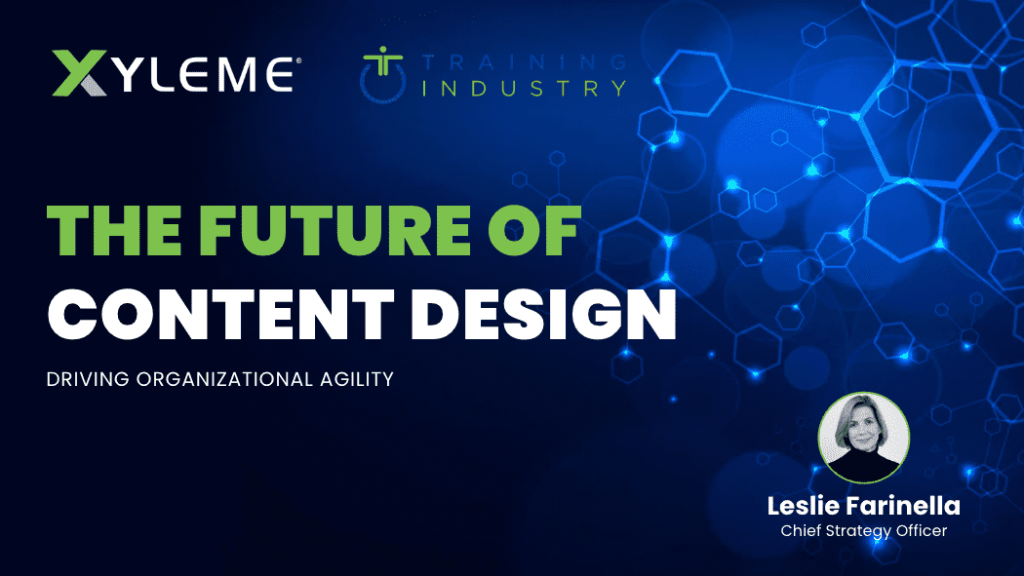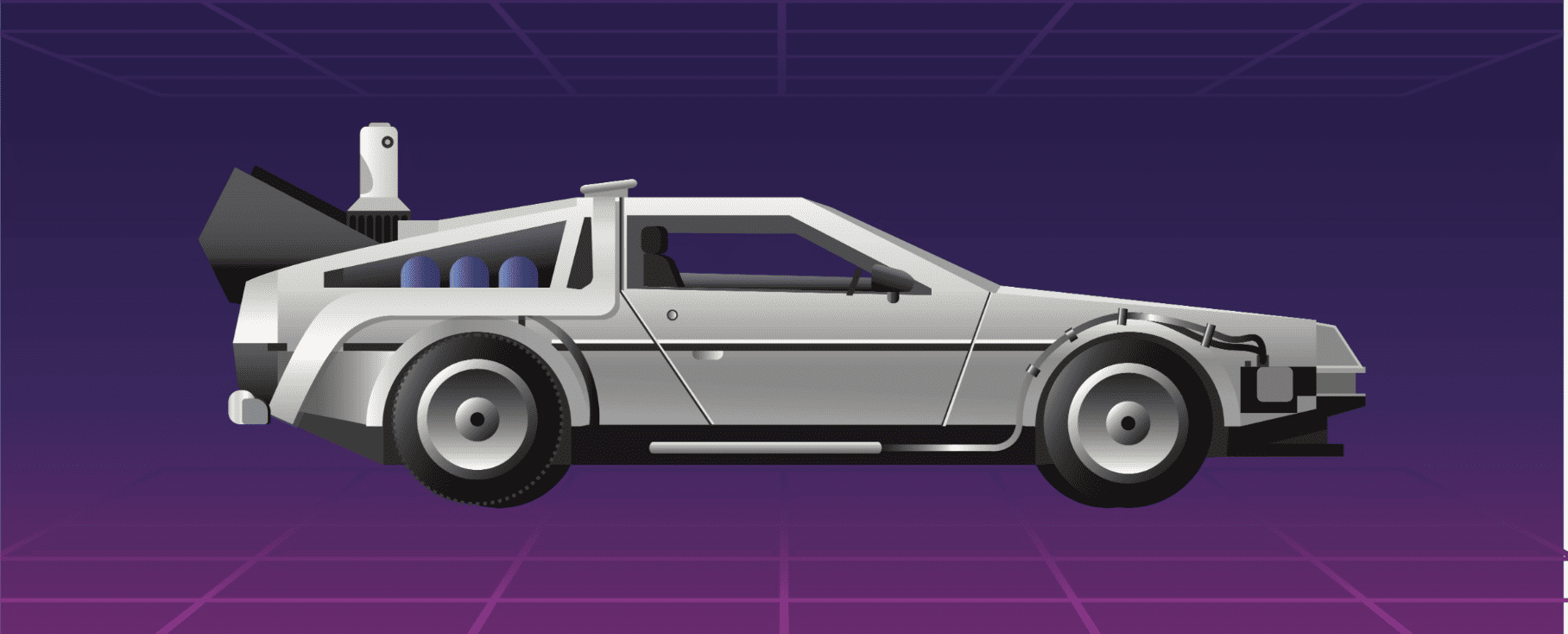In the iconic movie, “Back to the Future,” the protagonist, Marty McFly, travels through time to alter his future and ultimately shape his destiny. Similarly, learning and development initiatives allow employees to shape their own “future” by acquiring new knowledge, skills, and experiences that can help them grow and advance in their careers.
Investing in learning and development not only benefits individuals but also the organization as a whole. By up-skilling employees, organizations can improve productivity, increase employee engagement and retention, and enhance their competitive advantage in the market.
Back to the Future Lesson #1:
A Lesson in Agility for L&D
As we navigate through these uncertain times, it’s become clear that agility is no longer a nice-to-have quality, but a necessity. The ability to quickly adapt to changing circumstances has become a key factor for success, both personally and professionally. And while the concept of agility may seem like a modern-day buzzword, it’s a lesson that we can learn from an unlikely source – the classic movie, Back to the Future.
The Importance of Adaptability
In the movie, we see the protagonist, Marty McFly, travel back in time to the 1950s. While there, he encounters a number of challenges that he must overcome in order to get back to his own time. What’s interesting is how he approaches these challenges — he adapts.
For example, when he realizes that the car he needs to get back to the future is out of gas, he doesn’t give up. Instead, he comes up with a creative solution — he uses his knowledge of the past to create a plan to harness enough power to return him back home. This adaptability is what ultimately leads to his success.
The Role of L&D
So, what does this have to do with L&D? Well, L&D professionals have a unique opportunity to lead the way in promoting agility within their organizations. By providing employees with the necessary skills and knowledge to adapt to changing circumstances, L&D can help organizations thrive in today’s fast-paced world.
One way to do this is by offering training programs that focus on agility and adaptability. This can include courses on problem-solving and critical thinking. By equipping employees with these skills, they will be better equipped to handle unexpected challenges and come up with innovative solutions.
Embracing Change
Another lesson that we can learn from Back to the Future is the importance of embracing change. Marty McFly is forced to adapt to a completely different time period, and while it’s not always easy, he eventually learns to appreciate the differences and even uses them to his advantage.
Similarly, organizations must learn to embrace change if they want to succeed in today’s rapidly evolving business landscape. This means being open to new ideas, new technologies, and new ways of working. L&D can play a key role in helping employees embrace change by providing training programs that focus on agility, adaptability, and innovation.
Back to the Future Lesson #2:
How L&D Teams Can Shape the Future of Work
As we look towards the future of work, it’s important for L&D teams to take a step back and evaluate how they can best support their organizations. By aligning learning programs to business goals, upskilling employees, creating a culture of learning, and improving employee retention, L&D teams can help shape the future of work.
Aligning Learning Programs to Business Goals
One of the key roles of L&D teams is to ensure that learning programs align with the goals of the business. This means understanding the strategic objectives of the organization and designing programs that support them. For example, if the business is looking to expand into new markets, the L&D team might design programs that focus on cross-cultural communication and market research.
By aligning learning programs to business goals, L&D teams can help ensure that employees are developing the skills and knowledge they need to support the organization’s growth and success.
Upskilling Employees
As the pace of technological change continues to accelerate, it’s becoming increasingly important for employees to continually upskill and reskill. L&D teams can play a critical role in supporting this process by designing programs that help employees develop new skills and stay current with emerging trends.
For example, if the organization is adopting a new technology platform, the L&D team might design programs that help employees learn how to use the new system effectively. Or, if the organization is looking to improve its data analytics capabilities, the L&D team might design programs that focus on data analysis and visualization.
By upskilling employees, L&D teams can help ensure that the organization is able to adapt to changing market conditions and stay ahead of the competition.
Creating a Culture of Learning
In order to be successful in the future of work, organizations need to create a culture of learning. This means emphasizing the importance of continuous learning and making it a core part of the organization’s values and mission.
L&D teams can help create a culture of learning by designing programs that are engaging, interactive, and relevant to employees’ needs. They can also work with managers and executives to communicate the importance of learning and encourage employees to take advantage of learning opportunities.
By creating a culture of learning, L&D teams can help ensure that employees are motivated to develop their skills and knowledge and that the organization is able to stay competitive in a rapidly changing market.
Improving Employee Retention
Finally, L&D teams can play a critical role in improving employee retention. By providing opportunities for learning and development, organizations can demonstrate their commitment to their employees’ professional growth and development.
In addition, by upskilling employees and creating a culture of learning, organizations can help employees feel more engaged and motivated in their work. This can lead to higher levels of job satisfaction and lower turnover rates.
Overall, L&D teams have a critical role to play in shaping the future of work. By aligning learning programs to business goals, upskilling employees, creating a culture of learning, and improving employee retention, L&D teams can help ensure that organizations are able to adapt to changing market conditions and stay ahead of the competition.
Back to the Future Lesson #3:
How to Prevent Retention from Remaining a Pain Point
In the movie, Marty McFly travels back in time and meets his parents when they were teenagers. Marty’s actions in the past have a significant impact on the present and future. Similarly, the actions of employers today can have a significant impact on the retention of their employees.
Retention remains a pain point for many companies, despite efforts to improve it. One of the main reasons for this is that employees’ motivations to learn and grow are not being met. According to a survey by LinkedIn, employees’ top motivations to learn are progress toward career goals, staying up to date in their fields, if they had more time, personalized learning for their interests and career goals.
Progress Toward Career Goals
Employees want to feel like they are making progress in their careers. They want to know that their efforts are leading to something meaningful. Employers can help by providing clear career paths and development opportunities. This can include training programs, mentorship, and coaching. When employees see that there is a path forward, they are more likely to stay with the company.
Staying Up to Date in Their Fields
In today’s fast-paced business world, it’s essential to stay up to date with the latest trends and technologies. Employees want to know that they are learning skills that will help them in their jobs. Employers can help by providing access to training and development resources. This can include online courses, conferences, and workshops. When employees feel like they are learning new skills, they are more likely to stay engaged and motivated.
Personalized Learning for Their Interests and Career Goals
Employees want to feel like their interests and career goals are being taken into account. They want to learn skills that are relevant to their jobs and their passions. Employers can help by providing personalized learning opportunities. This can include creating individualized development plans, allowing employees to choose their own training programs, and providing opportunities for employees to pursue their interests outside of work. When employees feel like their needs are being met, they are more likely to stay with the company.
As organizations seek ways to navigate shifting priorities, rising employee expectations, and economic uncertainty, investing in learning and development initiatives is crucial for building the skills and developing the people for a stronger future.
By providing employees with opportunities to learn and grow, organizations can stay ahead of the curve, improve productivity, and enhance their competitive advantage in the market. So, let’s go back to the future and invest in learning and development for a stronger tomorrow.
Want to future proof your content? Our Chief Strategy Officer, Leslie Farinella hosted a webinar, “The Future of Content Design” with Training Industry that’s now on-demand. Watch the recording below!

Webinar: The Future of Content Design
With this shift came a greater focus on creating personalized pathways for top talent to develop the skills they need to keep and grow their careers. According to the LinkedIn Learning 2022 Report, companies that excel at internal mobility retain employees two times as long as those that struggle with it. This shows that L&D will play a critical role





